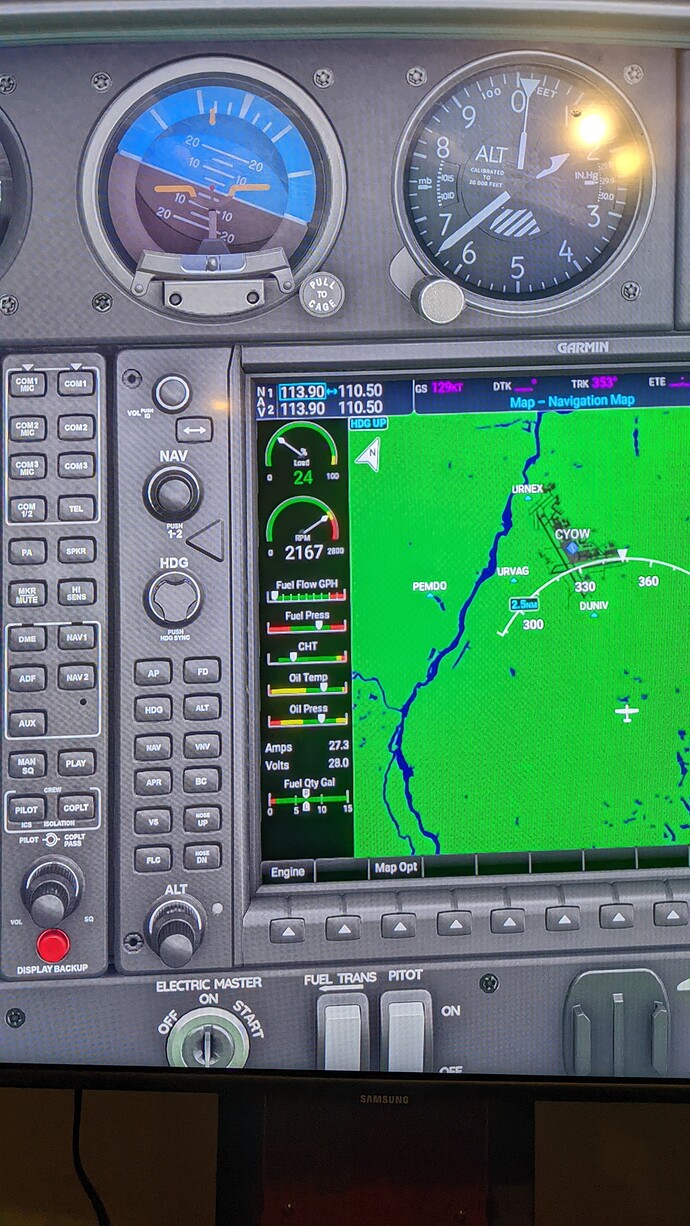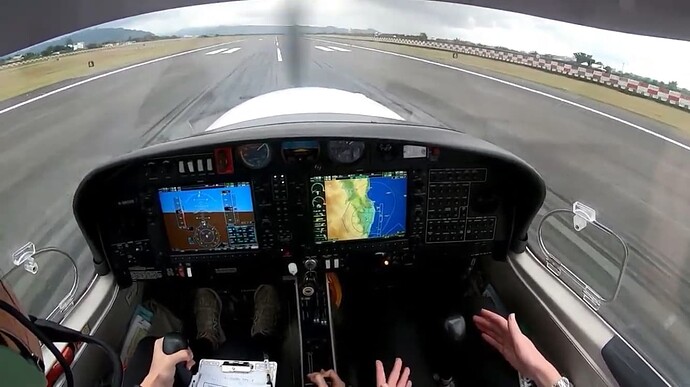Thank you!
Thats no where special nowadays, ATR for example does have separate condition levers (no prop levers), they are set to auto and you never touch them during flight. Exactly the same as the TBM. Only difference is that TBM merged all of that into one lever.
To add, on approach you should be able to reduce speed easily while maintaining a 3 degree glide path. A rule of thumb which works on most turboprops:
- Deceleration height = speed x 10
For example, when maintaining 250 kts, start reducing at 2500 ft above ground. You should be stable at 500 ft in that case. When in IMC you should be stable at 1000 ft above ground so add 500 ft to the above equation.
If this doesn’t work its either a bug or drag is set too low. Don’t try this on a jet, won’t work ![]() . On a jet you need roughly 2 nm per 10 kts you want to reduce (half that when using speed brakes).
. On a jet you need roughly 2 nm per 10 kts you want to reduce (half that when using speed brakes).
Cool! I didn’t know that. I fly the Q400 which in theory should be able to do just that but we still have the condition levers to maintain the “common type rating” with the “classic” Dash 8. You still have to manually select which RPM you want but it’s a fixed option of 1020/900/850 RPM. FADEC/PEC take care of all the work making that selection happen.
Which I’ve yet to see a company treat them as a common type because they are still very different airplanes. Could have been a much more advanced airplane but the common type held it back.
Yep and Q400, too. TBM is essentially doing the same thing with just less levers - The “h” gate is the clever bit as seen from a pilot interface standpoint.
Yes, would be a bit difficult to integrate this “h-gate” on two engines. Good luck feathering one engine in case of failure ![]() . Actually it could work if the left engine would be a inverted “h”. So for feather you move the power lever from ground idle outboard, then down for fuel cut-off. Could work…
. Actually it could work if the left engine would be a inverted “h”. So for feather you move the power lever from ground idle outboard, then down for fuel cut-off. Could work…
Moved to #third-party-addon-discussion:aircraft as this is about the Daher.
The Prop RPM has little bearing on power by itself. You can land at that RPM without issue. It’s the Torque, (propeller pitch), that determines the power being produced. To fly high performance aircraft you need to learn power settings to use at specific distances to the runway or during approaches. Fly by the numbers by studying flight manuals and procedures established for that plane.
Not true though, power = torque x RPM, in other words RPM has a lot to do with power! The same torque at a lower RPM means lower power. In any case, the picture is showing a very odd situation for a single engine piston aircraft if this is idle power. With the power set to idle the RPM should drop off quite a lot, the exact figure is depending on the airspeed. High speed is higher windmilling RPM, low speed is lower windmilling RPM. This propeller does not seem to be windmilling at all.
To the OP, try cutting the engine and see if there is any large reduction in power and drop in RPM. I think its a bug, the idle power is set too high, keeping the propeller within governing range. You can already see this on the load indicator (whatever that means exactly), if the propeller is windmilling it is essentially driving the engine instead of vice versa so load should be negative for a windmilling propeller. Of course not 100% sure what the FADEC logic does exactly on that aircraft, but seems way too high idle power setting.
By the way, isn’t that a Diamond? Are we calling that a “high performance aircraft” nowadays? ![]()
From the first random Youtube video I opened, load 0%, RPM low. This is at a lower speed than your picture but yes there clearly is something wrong:
Sorry I was specifically speaking about a turboprop. I thought the aircraft in question and photo was a TBM. When I put the props full forward on final the prop speed should maintain it’s programed RPM. Piston engines are certainly different, yes.
Yes depending on the engine, turboprops are usually entering fuel governing mode where prop RPM is maintained by adjusting fuel flow with the propeller on the fine pitch stop.
Ironically, since I haven’t flow a fixed pitch prop in so many decades, I don’t pay much attention to RPM anymore other than setting them to cruise and to make sure it’s within it’s safe limits. It’s only Torque or MP that get 99% of my attention. Then planes like the TBM spoil you with no control over it at all.

